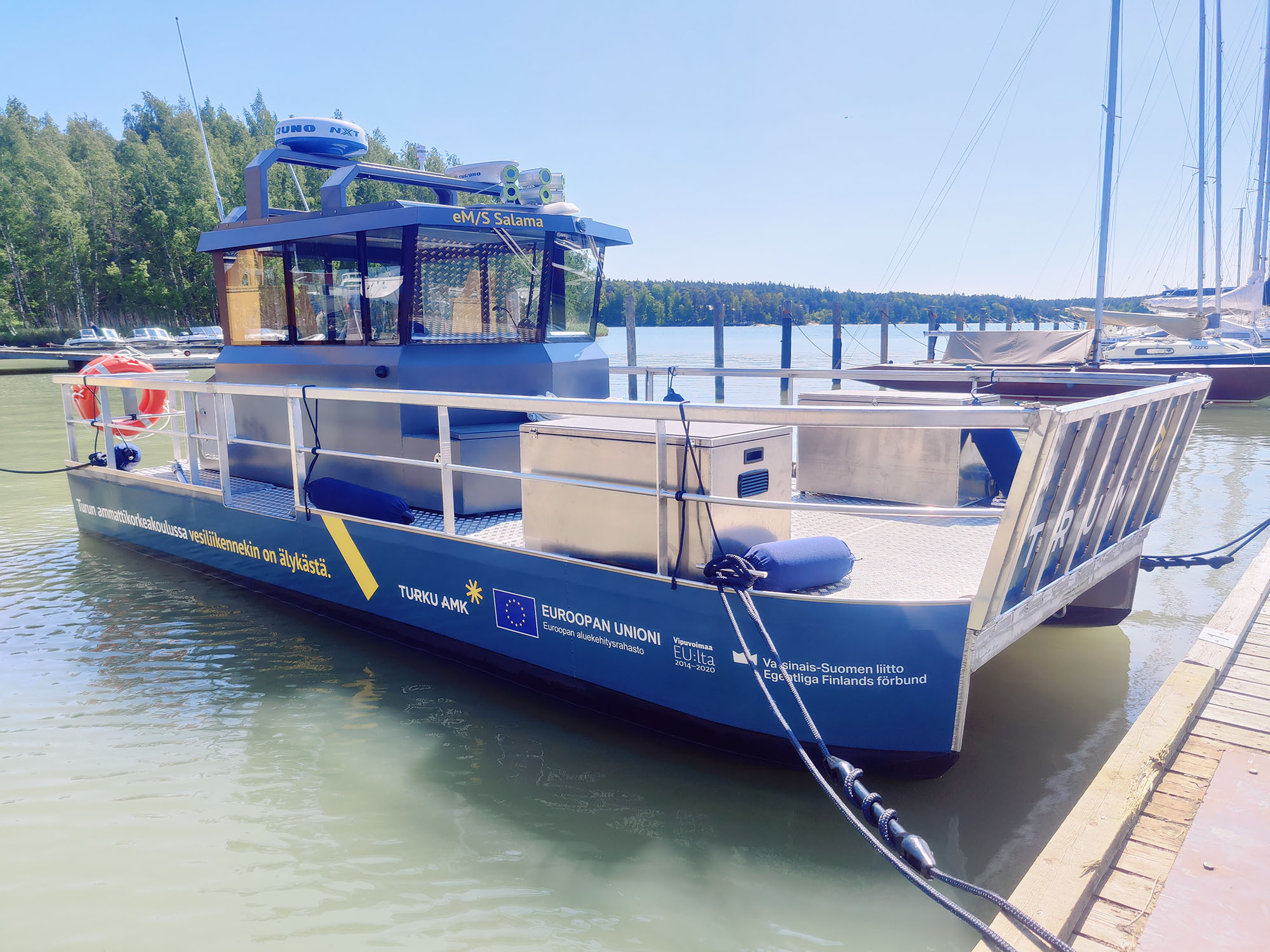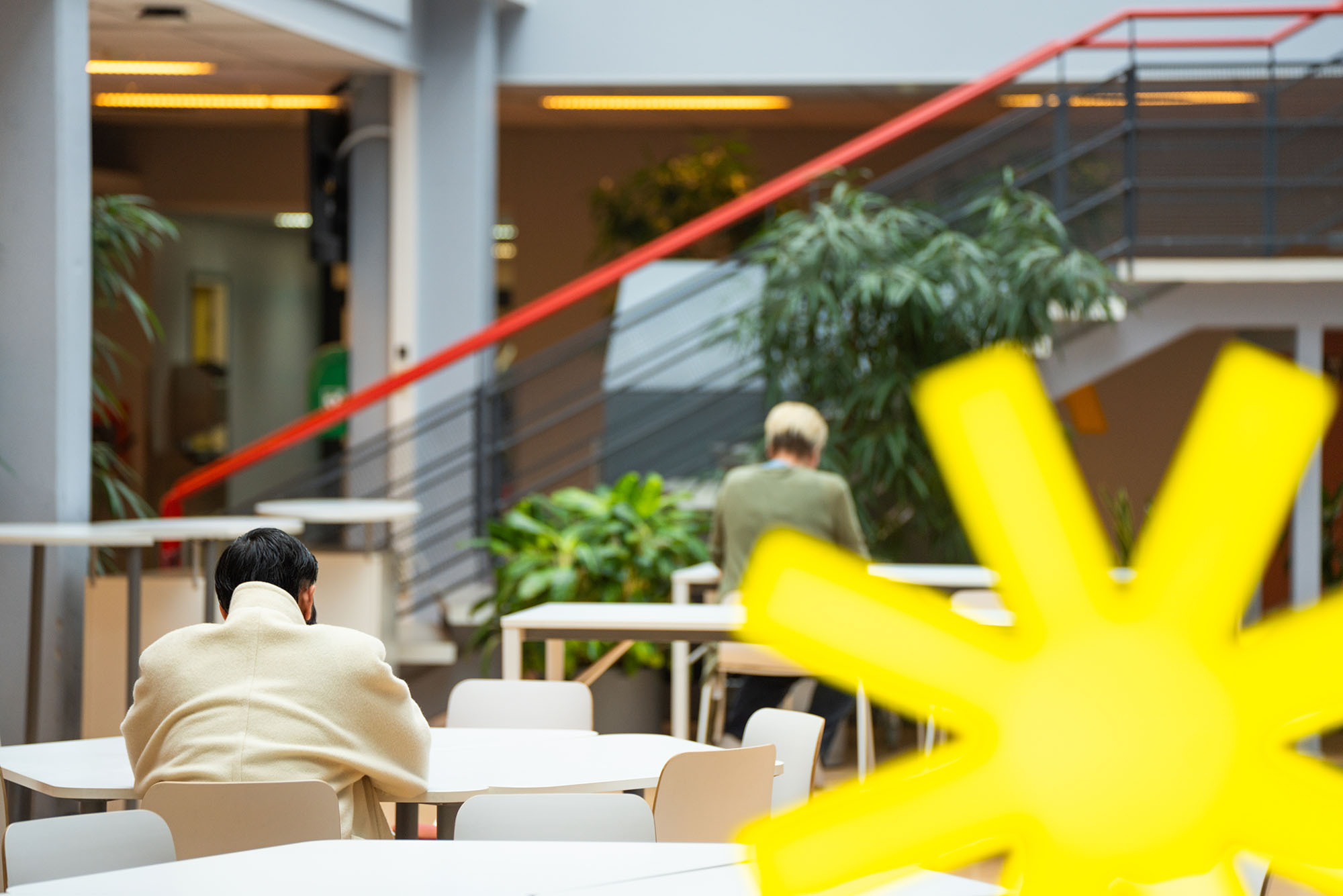The Built Environment Research Group of Turku University of Applied Sciences, together with the Lounais-Suomen Yleishyödyllinen Asuntosäätiö, investigated the carbon footprint of construction and housing.

Published:
Edited:
Text and photo: Siiri Welling
It is possible to significantly reduce the carbon footprint of buildings over their life cycle through the right choice of materials. Low-carbon concrete, timber frame, CLT frame and the right type of heating can ensure emission reductions of up to 28-43%, depending on the type of building. The results can be found in a report by the Built Environment Research Group of Turku University of Applied Sciences.
The study investigated the carbon footprint of the construction of two new buildings in Skanssi and Kaarina in Turku. The study also calculated the carbon footprint of housing for an individual resident, which is less common in construction carbon footprint calculations.
“The results were very positive. They suggest that a reasonable carbon footprint for housing can be achieved with construction projects that meet current regulations, and that the future goal of reducing the carbon footprint of individual consumers in housing and construction is not as impossible to achieve as previously thought,” says Tapio Keiramo, lecturer at Turku University of Applied Sciences.
The annual consumption per inhabitant was calculated by dividing the annual emissions by the number of inhabitants. The number of inhabitants in the Kurtiini apartment block in Skanssi is about 95. The annual carbon footprint per inhabitant in Skanssi is about 1500 CO²ₑ/person/year. In Kaarina, the wooden-framed terraced housing company Karpalo has a lower annual carbon footprint of about 1 021 kgCOₑ per inhabitant. The carbon footprint of a terraced house is 10.9 CO²ₑ/m²/a, which is below the preliminary carbon footprint threshold (11.5 CO²ₑ) presented in a report commissioned by the Ministry of Environment a year ago. In particular, the lower carbon footprint was due to the wooden frame and the lower level of piling compared to a block of flats.
Current building codes and regulations make it possible to produce both wood and concrete housing while meeting carbon footprint targets.
The annual emissions of the Skanssi apartment block exceed the proposed limit value by around 20%. Annual emissions are 16.77 kgCOₑ/m²/a. This is influenced by the way the building was constructed, as it was built on steel piles on a load-bearing moraine layer. To ensure sufficient load-bearing capacity, several piles were needed in relation to the surface area of the building.
However, the biggest factor affecting emissions is the connection of the apartment building to Turku’s district heating system, as the emission factor for district heating is high in the calculation. However, solar panels are also planned for the apartment building. If implemented, these will significantly reduce the carbon footprint of the building and housing.
Lower than average carbon footprint
However, the calculated carbon footprint of construction and housing for the two buildings is lower than the average carbon footprint of housing and energy in Finland. According to data from the Finnish Environment Institute, in 2016 the carbon footprint of one person in the housing and energy consumption expenditure category was about 3 300 CO²ₑ. The result for Kutriin, a housing company in Turku Skanssi, is 40% below the average estimate. In Kaarina, the carbon footprint is up to 60% lower than in 2016.
“Current building codes and regulations make it possible to produce both wood and concrete housing while meeting carbon footprint targets. Concrete apartment buildings are more challenging to meet the targets, but offer greater potential for savings. The targets are easier to meet with a small block of blocks of flats made of wood, although the potential savings in Kaarina would have been greater,” says Keiramo.
The Built Environment Research Group of Turku University of Applied Sciences compared the carbon footprint of housing and construction of a concrete-framed apartment building and a wooden-framed small house block in the project Carbon Footprint Impact on Housing, in cooperation with a grant from the Southwest Finland Charitable Housing Foundation in 2020-2022. Rauno Saari , agent of the Southwest Finland Charitable Housing Foundation, is pleased with the results.
“The results show that we are moving in the right direction. As a foundation, we will continue to promote current issues and stay on top of the latest developments,” says Saari.
The text was published on 5.12.2022 on the previous turkuamk.fi website.
Get to know our research
Read next
-
Press Release

Joint research infrastructure funding for Turku higher education institutions from the Research Council of Finland
The NEMESIS research infrastructure collects data related to the state of the environment and maritime safety in the archipelago. NEMESIS, a collaboration between three universities, enables long-term monitoring…
-
CaseNews

Turku UAS collaborates with EOS Oy, a company specialising in 3D printing
Turku University of Applied Sciences (Turku UAS) and Electro Optical Systems Finland Oy (EOS Oy) are strengthening their cooperation by signing a partnership agreement. In addition, EOS has…
-
CasePress Release

1000 students from Turku University of Applied Sciences develop sustainable development solutions for organisations in Turku
In a new joint project between Turku University of Applied Sciences and the City of Turku, students are solving sustainability problems in companies and other organisations. Published: Edited:…
